Fall & Winter:
plants look
better trimmed of any drying summer growth.
Trimming has to be ruthless! By the end of October, most plants are cut down
to 3" to 6" above the crown. This can be done in the Spring also except
that the garden would not look neat till then. Snow decorating the plants is very
intriguing.
Trimmings are removed or arranged as protection for the crowns. A mulch of
ginkgo
leaves (from our ancient tree next
to the market wall) is left to protect the crowns and roots and from erosion.
Paths are cleaned of all debris, plant labels are refurbished. Planning begins for
the new season: what plants need to be replaced in the Spring ? Even perennials are
not forever! Why were plants unsuccessful ? Should others be tried ? |
Spring and Summer:
When the frost is
out, the garden is raked, gently, to avoid disturbing new growth under the mulch.
Tilling and weeding is postponed until the "volunteer" plants are recognizable -
is it a plant of a weed ? We put in new plants, recognizing their requirements:
sun/shade, wet/dry, no wind, need of support, ph level, fertilizer. The Herb Garden
has never been treated with fertilizer. We depend on self-sowing for borage, salad burnet, calendulas and poppies.
We relocate seedlings that have "jumped the fence".
All summer long the garden seems to grow beyond the bounds, especially the old residents
like lavender, borage and horseradish. We keep trimming as necessary, keep leaning
stems away from paths, we use garden sticks. Some plants are divided.
The garden needs a good soaking twice a week - rainfall is often insufficient. Daily
sprinkling only wets the top of the soil and makes the roots seek the surface - not good !
Weed killers are not used, except for the brick paths. Moss grows on the
paths in damp weather and makes them slippery - we scrape it off. |
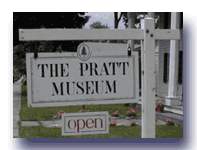
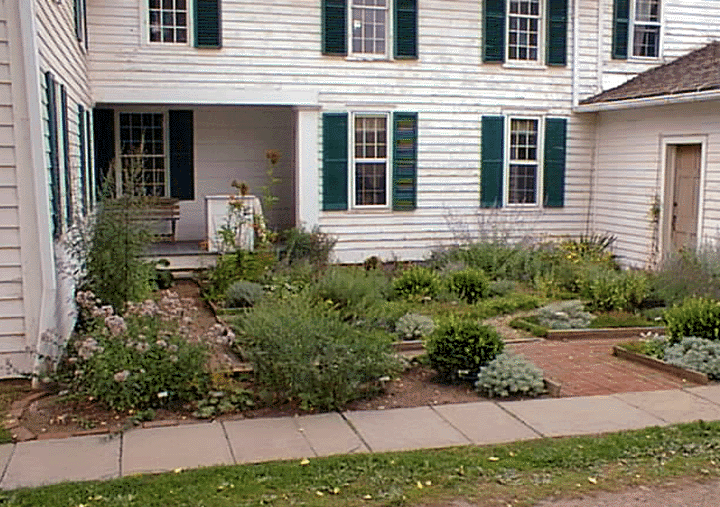
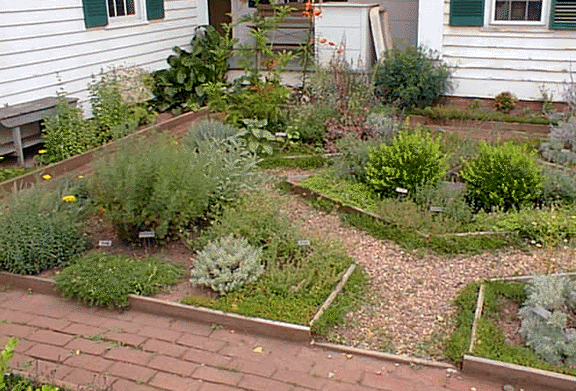
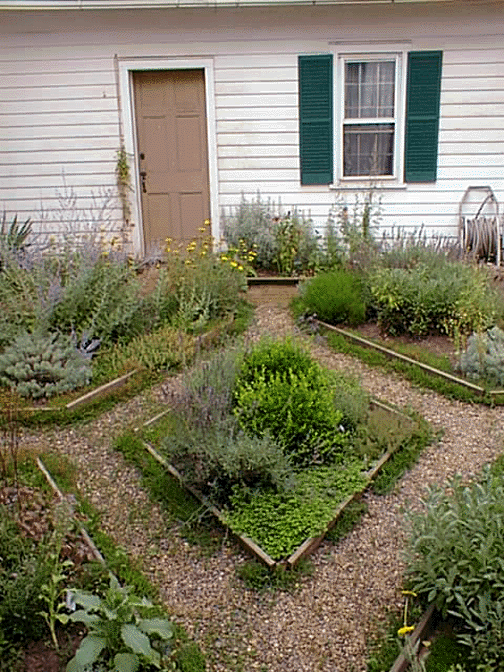
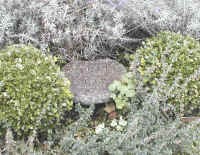
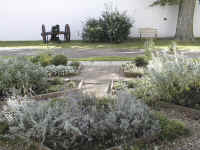
 HOME
HOME